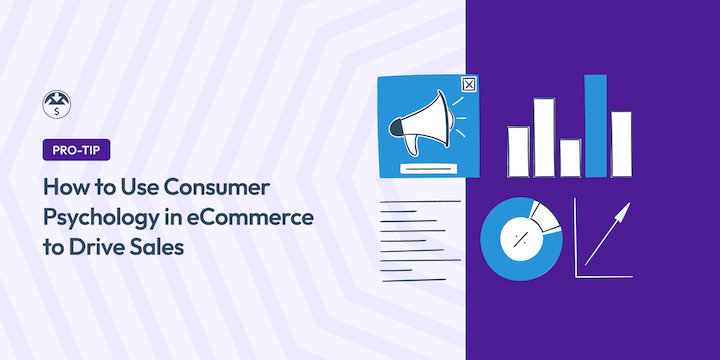
Are you interested in leveraging consumer psychology in eCommerce to drive online sales?
Understanding the world of consumer psychology—the study of how people think, feel, and behave when it comes to making purchasing decisions—can help drive your eCommerce success.
🔎 In this article, I’ll cover:
What Is Consumer Psychology?
Consumer psychology dives into the “why” behind buying decisions. It explores the various psychological, social, and emotional factors that influence how consumers perceive, evaluate, and ultimately purchase products or services.
By understanding these factors, you can craft effective marketing and sales techniques that resonate with your target audience and drive them toward that coveted “checkout” button.
Why Use Consumer Psychology in eCommerce
Think of consumer psychology as your secret weapon in the competitive digital age of eCommerce. There are a variety of reasons why eCommerce brands and retailers must consider psychological principles and factors that influence consumer decision-making processes.
By understanding what motivates customers, you can tailor your product offerings, website design, and digital marketing messages to speak directly to their needs and desires. This leads to higher customer engagement and conversion rates.
It can also improve the user experience throughout the customer journey. Consumer psychology helps you anticipate and address potential customer concerns. This creates smoother and more enjoyable customer experiences, fostering loyalty and repeat business.
Additionally, understanding consumer behavior allows you to make informed data-driven decisions about your online business, marketing strategies, and product development based on real-time data and demographics, not just guesswork. This helps you optimize your online store for maximum impact.
Popular Consumer Psychology Concepts
To better understand how useful it can be in eCommerce, it helps to familiarize yourself with some popular consumer psychology concepts.
Social Proof
If you want to attract new customers, it’s important to establish trust and credibility. People are more likely to trust and buy from a brand they perceive as trustworthy.
In fact, consumer research revealed about 34% of shoppers abandon a sale because they don’t trust the brand enough.
Leverage social proof by showcasing customer reviews, testimonials, and user-generated content prominently on your product pages and eCommerce site.
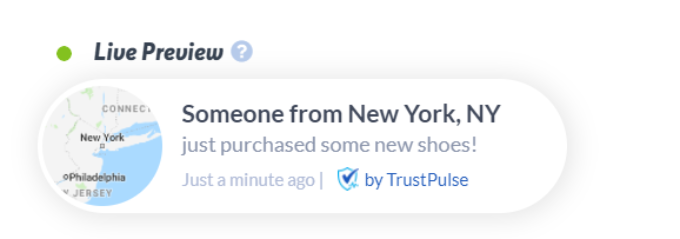
Reciprocity
People feel obligated to return a favor. Offer valuable free resources, like downloadable guides or cheat sheets, related to your products to build trust and establish reciprocity with potential customers.
Anchoring
Our perception of value is often influenced by the first price we see. Use anchoring by showcasing the original price of a discounted product or offering tiered pricing options that make the desired option seem more attractive in comparison.
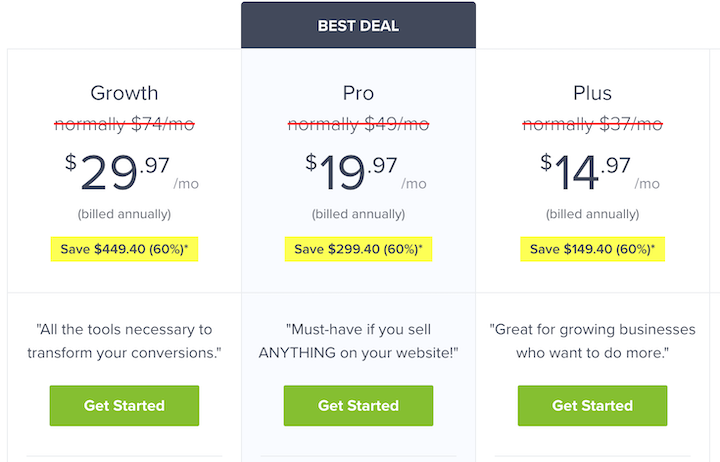
Scarcity & FOMO (Fear of Missing Out)
Humans are naturally wired to avoid losses more than they are motivated by potential gains. They also don’t like being left behind. These concepts, called loss aversion and FOMO, can help create a sense of urgency among shoppers.
The idea that something is in limited supply makes it seem more desirable. Examples of implementing scarcity tactics include showcasing limited quantities of a product, offering exclusive pre-order opportunities, adding countdown timers to promotions, or highlighting popular products that are “selling fast”.
Tips to Use Consumer Psychology in eCommerce
Now that you’re armed with some key consumer psychology concepts, let’s dive into actionable strategies you can implement in your EDD store.
1. Consider Color Psychology for Website Design
Color schemes and website design are powerful tools in your eCommerce arsenal for influencing consumer psychology. Different colors evoke distinct emotions and have cultural associations. For example, red is often linked to excitement and urgency, while blue conveys trust and security.
In addition to first impressions and brand recognition, studies suggest colors can also influence impulse purchases. Warm colors like red and orange can stimulate energy and buying decisions, while cooler colors like blue and green can promote a sense of calm and considered purchases.
Colors help create a visual experience that shapes how customers perceive your brand, navigate your store, and ultimately interact with your products. By understanding the psychology behind color and design, you can create an eCommerce website and campaigns that align with your brand identity and desired customer experience to drive conversions.
2. Utilize Visual Hierarchy
Speaking of your website design, I highly recommend guiding the visitor’s eye through your online store using the principles of visual hierarchy.
People naturally gravitate toward websites that are easy to navigate and understand. A user-friendly layout with clear menus, intuitive navigation, and strategic use of white space reduces cognitive load and allows visitors to find what they need quickly and efficiently.
This means strategically placing prominent elements like your logo, hero image, and key product information to capture attention and guide visitors on a specific journey.
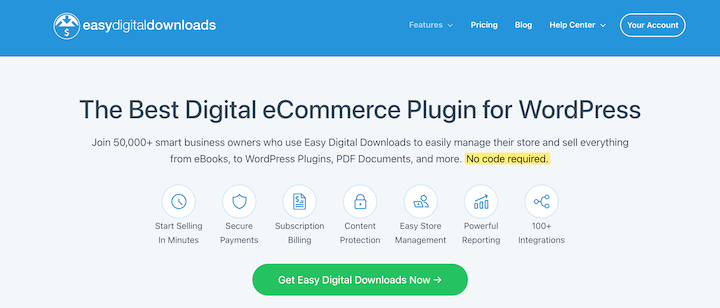
Also, consider the prominence of your Calls to Action (CTAs). Use clear, contrasting colors and strategic placement to guide visitors toward your desired actions, whether it’s adding a product to cart, subscribing to your newsletter, or contacting you.
3. Craft Compelling Product Descriptions
Facts tell, stories sell. Connect with your online shoppers on an emotional level by weaving compelling stories into your product descriptions and marketing messages. Go beyond just listing features.
Focus on how your product can solve their problems or improve their lives. Use vivid language and emotional storytelling to highlight the benefits your products offer.
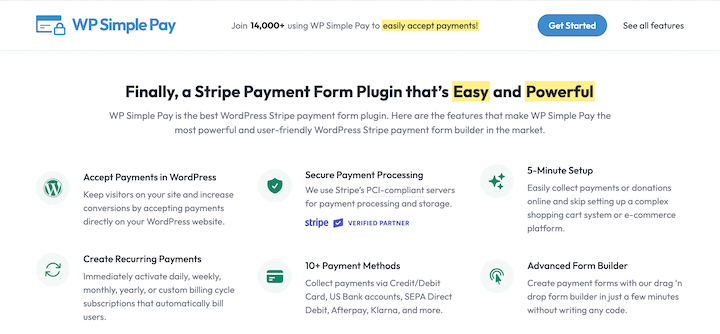
4. Optimize Your Product Images
High-quality, engaging product images are crucial. One consumer report found that over 75% of shoppers are compelled to click due to great product images.
Use multiple images from different angles and consider showcasing the product in use to give customers a better sense of what they’re buying.

WordPress plugins can help you optimize your product images for both aesthetics and performance.
5. Build Trust With Social Proof
Online consumers are more likely to buy from brands they trust. Build trust and leverage the power of social proof by showcasing product reviews and real-time customer activity notifications.
Online reviews, customer testimonials, influencer recommendations, and user-generated content heavily influence buying decisions. Consumers trust the opinions of others and seek out social validation before clicking “buy.”
Encourage customer reviews by offering incentives (EDD Reviews extension) or simply making the review process easy and convenient. Respond to both positive and negative reviews professionally and promptly.

To help boost customer satisfaction and trust, it’s also smart to display security badges and provide excellent customer service and support.
6. Create a Sense of Urgency & FOMO
Limited-time offers, countdown timers, and ‘last chance’ notifications can create a sense of urgency and encourage impulse purchases.
Showcase limited quantities or exclusive pre-order opportunities to make your products seem more desirable.

Play on FOMO by showcasing social media buzz around your new products or highlighting successful customer stories. Consider using a plugin like Smash Balloon to integrate your social media feeds onto your site to amplify this effect.
7. Offer Bundle Deals
People love a good deal. Create bundle deals that combine multiple complementary products at a discounted price.
This strategy encourages upselling and increases average order value. EDD core functionality allows you to create product bundles easily.
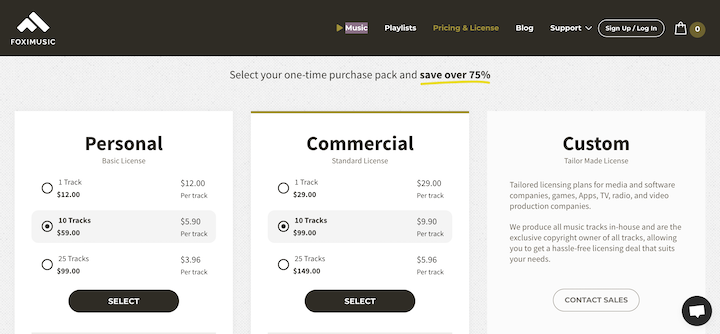
By displaying the original price versus the discounted price, you can also leverage the anchoring principle that makes it easier for customers to see the value being offered.
8. Personalize the Shopping Experience
Consumers crave a personalized shopping experience. They appreciate stores that recommend products based on their interests, past purchases, and browsing behavior.
When possible, personalize the shopping experience for your customers. This could involve displaying recommended products based on purchase history (EDD Product Recommendations extension) or tailoring your email marketing campaigns to specific customer segments.
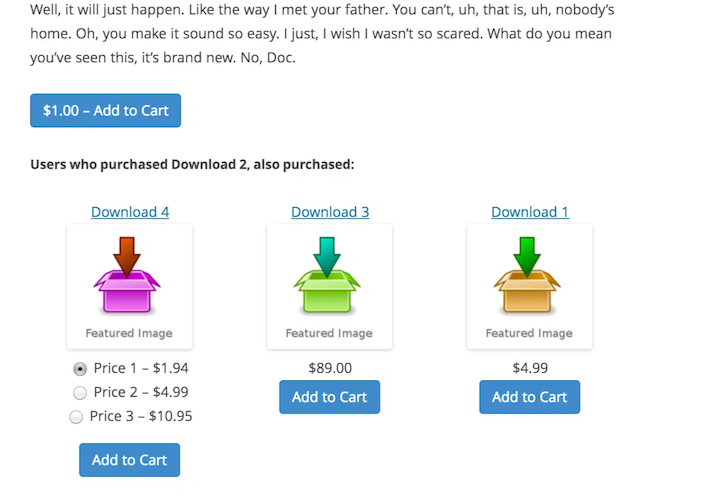
9. Use A/B Testing
The best way to determine what resonates with your audience is to test different approaches. Utilize tools like MonsterInsights to conduct A/B testing and experiment with different product descriptions, pricing strategies, and CTA buttons.
The more insights you have into your customer behavior and eCommerce performance, the better able you’ll be to make necessary improvements.
FAQs on Consumer Psychology in eCommerce
Let’s wrap up with some frequently asked questions about consumer psychology in eCommerce and how to use it to drive sales.
Is consumer psychology ethical in eCommerce?
Yes, leveraging consumer psychology in eCommerce is ethical. When used ethically, consumer psychology helps you understand your customers better and create a more positive shopping experience for them. It’s about providing value and building trust, not manipulating people.
What is a psychological trigger in eCommerce?
In eCommerce, a psychological trigger is a specific stimulus designed to influence a customer’s behavior and nudge them towards making a purchase. These triggers tap into fundamental human emotions, desires, and cognitive biases to create a sense of urgency, desirability, or social proof, ultimately increasing the chances of conversion.
By strategically incorporating these psychological factors into your eCommerce strategy, you can influence customer behavior and create a more persuasive online shopping experience that drives sales.
What is consumer behavior in eCommerce?
Consumer behavior in the eCommerce industry is a fascinating mix of convenience, research, and social influence. Some key trends include mobile-first shopping, omnichannel experiences, value shopping, and prioritizing speed and convenience.
Understanding these consumer behavior trends is crucial for eCommerce businesses to stay ahead of the curve. By creating a mobile-friendly, informative, and convenient online store that caters to these evolving preferences, businesses can build trust, loyalty, and ultimately drive sales.
Leverage the Power of Consumer Psychology
By understanding and applying the principles of consumer psychology, you can transform your EDD store into a conversion powerhouse. Remember, it’s all about understanding your customers’ needs, wants, and motivations, and using that knowledge to create a compelling and persuasive shopping experience that drives sales and fosters long-term customer loyalty.
Don’t have Easy Digital Downloads yet? Grab your pass and get started within minutes:
What’s next? Learn about more digital store features customers love!
📣 P.S. Be sure to subscribe to our newsletter and follow us on Facebook or Twitter for more WordPress resources!
Using WordPress and want to get Easy Digital Downloads for free?
Enter the URL to your WordPress website to install.
Disclosure: Our content is reader-supported. This means if you click on some of our links, then we may earn a commission. We only recommend products that we believe will add value to our readers.